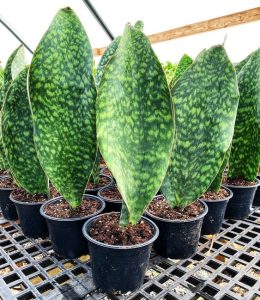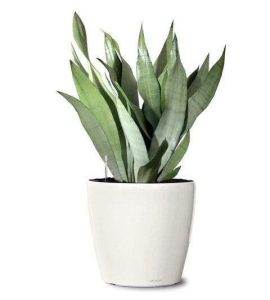- English
- Chinese
- French
- German
- Portuguese
- Spanish
- Russian
- Japanese
- Korean
- Arabic
- Irish
- Greek
- Turkish
- Italian
- Danish
- Romanian
- Indonesian
- Czech
- Afrikaans
- Swedish
- Polish
- Basque
- Catalan
- Esperanto
- Hindi
- Lao
- Albanian
- Amharic
- Armenian
- Azerbaijani
- Belarusian
- Bengali
- Bosnian
- Bulgarian
- Cebuano
- Chichewa
- Corsican
- Croatian
- Dutch
- Estonian
- Filipino
- Finnish
- Frisian
- Galician
- Georgian
- Gujarati
- Haitian
- Hausa
- Hawaiian
- Hebrew
- Hmong
- Hungarian
- Icelandic
- Javanese
- Kannada
- Kazakh
- Khmer
- Kurdish
- Kyrgyz
- Latin
- Latvian
- Lithuanian
- Luxembou..
- Macedonian
- Malagasy
- Malay
- Malayalam
- Maltese
- Maori
- Marathi
- Mongolian
- Burmese
- Nepali
- Norwegian
- Pashto
- Persian
- Punjabi
- Serbian
- Sesotho
- Sinhala
- Slovak
- Slovenian
- Somali
- Samoan
- Scots Gaelic
- Shona
- Sindhi
- Sundanese
- Swahili
- Tajik
- Tamil
- Telugu
- Thai
- Ukrainian
- Urdu
- Uzbek
- Vietnamese
- Welsh
- Xhosa
- Yiddish
- Yoruba
- Zulu
- Kinyarwanda
- Tatar
- Oriya
- Turkmen
- Uyghur

N'ihi ụdị ọhụụ na nnukwu mgbanwe, Sriaviaria Trifascatia-a na-akpọ snaketiil orchid ma ọ bụ ọdụ ọdụ - bụ ihe ọkụkụ na-ewu ewu n'ime ụlọ. Western na etiti Africa bụ ebe obibi ya; Karịsịa na Nigeria na Cameroon nke mpempe akwụkwọ na agba ya, nke ọdụ ọdụ ọdụ dị ukwuu na-achọ mgbe ọ na-eme ka ikuku na-asa ahụ.

Osisi agwọ
Ọdịdị
Mpempe akwụkwọ na agba ụcha
Na-apụtakarị site na ntọala, ogologo, ogologo, nke kwụ ọtọ, nke kwesịrị ekwesị na-akwado ya nke ọma, ahịhịa ndị dị oke mma nwere ike idowe ọnọdụ dị mma na ihu igwe. A na - egosikarị ihe na - acha odo odo ma ọ bụ na-acha ọcha, na-agba akwụkwọ site na ọchịchịrị akwụkwọ ndụ akwụkwọ ndụ. N'elu akwụkwọ ahụ na-egosi ọnya ogologo oge ma ọ bụ ntụpọ, nke na-agbakwunye na anya ha pụrụ iche kama ọ na-ewelite uru ọ bara.
akwukwo akwukwo
A na - ejikarị ike na - ejikọ ọnụ site na ntọala iji mepụta ụyọkọ kọmpat nke akwụkwọ, akwụkwọ nke ọdụ ọdụ nke Tiger orchid na-etolite. Ọ bụ ezie na mgbe ụfọdụ ntakịrị, a na-eji nlezianya tinye ma nọrọ ogologo oge. Ihe ndozi a na - eme ka o zuru oke maka ebe obibi dị ka shelves akwụkwọ ma ọ bụ ọrụ n'ime.
Akụkụ ihe ọkụkụ na ụlọ elu dị elu
A na-etolite orchids ọdụ na-eto eto 50 ruo 100 na ịdị elu ma nwee 2 na cm na mpempe akwụkwọ na akwukwo. Mgbanwe dị iche iche na ịdị obosara ya nwere ike igosipụta ọdịdị dịgasị iche iche na oke. Uzo nile osisi yiri ezigbo oge ma kwụsie ike n'ihi akwụkwọ ya dị.
Ihe omumu
A na-etolite orchid ọdụ ụgbọ mmiri na-eto eto, agbanyeghị usoro mgbọrọgwụ ya. Osisi ahụ na-eto nke nta nke nta n'ala ahụ ka mgbọrọgwụ usoro a na-agbasasị. Ya na nkwado, mgbọrọgwụ ya nke ọma na-etinye nri na mmiri nke ọma. Mgbakwunye ya dị ukwuu site na mgbọrọgwụ na-enyere ya aka ịba ụba na ala akọrọ.
Ngwongwo ifuru
Ọ bụ ezie na Tiger ọdụ ụgbọ mmiri na-adịkarịghị oge ntoju n'ime, obere ifuru na-acha odo odo ma ọ bụ nke na-acha odo odo na-acha odo odo na-acha odo odo na-aga n'ihu n'ọnọdụ ndị kwesịrị ekwesị. Ọtụtụ mgbe, inflorescence na-etolite na mmiri dị elu na-adị ka ifuru. Ọ bụ ezie na ọ zaghị nke ọma, ọnụ ọgụgụ ọhụrụ nke okooko osisi nwere ike ịkwalite gburugburu nke ime. Na-ekwukarị okwu, ifuru na-eme n'oge opupu ihe ubi ma ọ bụ ọkọchị.
Gburugburu zoro ezo
Chọrọ maka ọkụ
Site na ike ruo na ọkụ dị ala, sasseviaria na-agbanwe agbanwe ma nwee ike ịba ụba n'ọtụtụ gburugburu. Ọ bụ ezie na ọ nwekwara ike ịdịgide ahụ ike na ọkwa ọkụ dị ala, ọ na-eme nke ọma na ọtụtụ ọkụ dị iche iche. Ihu anyanwụ siri ike nwere ike ịgba akwụkwọ, yabụ yabụ ekpughe ogologo oge na-ekpughe ụdị ìhè siri ike dị otú ahụ kwesịrị ezere.
Ihe achọrọ
Na-eto eto nke ọma n'etiti 15 Celsius C na 30 Celsius C, Sansviaia nwere oke okpomọkụ chọrọ. Ọ bụ ezie na ọ nwere ike iguzogide ogo obere okpomọkụ, ngosipụta ogologo oge na gburugburu ebe obibi dị n'okpuru 10 Celsius C adabaghị maka ya. N'oge oyi, ị ga-eme ka ọ dị ọkụ site na oke okpomọkụ nwere ike ibute akwụkwọ ka ọ gbanwee edo edo ma ọ bụ ifriizi.
Ihe mkpuchi maka iru mmiri
Sansviaria na-eguzogide mmiri anaghị adabere na iru mmiri dị elu. Ọ nwere ike ịdị ndụ na gburugburu akọrọ, nke na-enyere ya aka ịdị mma na ikuku ikuku dị ala gburugburu. Mana iru mmiri kwesịrị ekwesị na-akwalite uto ihe ọkụkụ, ọkachasị na akọrọ ndị na-ere ọkụ, na mmegide gbakọrọ aka na-enyere aka mee ka osisi ahụ nwee ahụike.
Chọrọ ala
Ọ bụ ezie na ọ na-eto nke ọma na ala ndị raara nke ọma, Sansviaia bụ mgbanwe ala. Iji mee ka ikuku dịkwuo elu na ike igbapu ala, jiri ọkụ ọkụ na-ekpo ọkụ ma ọ bụ jikọta ahịhịa na aja ma ọ bụ perlite. A gaghị eji ala na-enweghị mmiri ghara iji gbochie mgbọrọgwụ ire ere.
Mkpa maka ikuku
Sansviaia nwere mmasị na ikuku ikuku. Ọ bụ ezie na ọ nwere ike na-eme nke ọma n'ime ụlọ, ikuku ikuku na-eme ka ihe dị mma na-enyere aka na osisi ahụ ike ma kwụsị ịgbasa mgbasa na ọrịa. Mgbasa ikuku ikuku na-adịghị mma nwere ike ịmepụta ntụpọ ọrịa ma ọ bụ ire ere na epupụta nke osisi, yabụ ka a ga-edozi nsogbu ikuku.
Uto na-eto eto
Osisi: photoynthesis
Sansviaria na-atụgharị carbon dioxide na oxygen site na photoynthesis, nke na-enyere aka melite ogo ikuku dị n'ime. Ọ bụghị naanị na ọ bụghị naanị foto ọyị ụbọchị, kamakwa n'abalị, nke na-ahapụ Sansviaria iji mee ka ọkwa oxygen dị ala.
Oketo
Sansevieria develops slowly and typically has substantial growth throughout the growing season (spring and summer). It grows consistently and requires little regular trimming. Still, light, temperature, moisture, and other factors influence the plant’s development rate; so, giving appropriate growing circumstances helps to encourage it.
Ofzọ nke Mgbasa Ozi
Mpempe akwụkwọ ma ọ bụ nkewa ga-enyere Sangevieria aka. A na-emekarị n'oge opupu ihe ubi, nkewa na-arụpụta ihe ndị na-eto eto na-eto eto na-ekewa mgbọrọgwụ mgbọrọgwụ. N'aka nke ọzọ, a na-ewepụta mpempe akwụkwọ na akwụkwọ dị mma ma tinye ya na ala ala, na-eche ha ka ha rie ọhụrụ Ome. Dị mfe ma dị mfe iji, usoro ịgbasa ndị a dabara na ndị na-elekọta ubi.
Ọrịa na pests
Ọ bụ ezie na Sansviaia na-eguzogide ọgwụ na ọrịa, na ihe omume nke oke iru mmiri ma ọ bụ nke na-ekwesịghị ekwesị ọ nwere ike ịmalite mgbọrọgwụ ire ere ma ọ bụ bull. Nnyocha ahụike na-ahụ maka ahụike na ọnọdụ gburugburu ebe obibi kwesịrị ekwesị na-enyere aka igbochi mgbasa nke pests na ọrịa nke ọma. Aphids na ududo bu ihe eji eme ihe na nke oria kwesiri ekwere na enyere aka ikwusi mgbasa ha.
Mgbanwe iyi
Strong drought tolerance and drought survival ability define Sansevieria. Its large leaves provide water storage, therefore enabling it to stay in excellent condition even in the absence of water. But too much drought might also hinder the plant’s development; hence, water it only gently and maintain the soil’s minor moistness.
Ọrụ mmezi
Usually once every 2 to 3 weeks, Sansevieria requires little water. Watering should be done after perfect dryness of the ground to prevent waterlogging that can lead to root rot. Water less often in winter to help the root system of the plant not suffer. Steer clear of too rich water sources to prevent compromising the plant’s health.
Njikere:
Onwere ihe achoro udiri, ya mere, n'oge opupu ihe ubi na udu mmiri udu mmiri nwere ike fesaa ya na abali abuo. Oge oyi bụ oge iji zere ịkọ nri dị ka osisi na-eto nwayọ nwayọ ma chọọ obere na ya. Flanizazation nwere oke mmiri nwere ike ibute mmepe osisi na-akụ ogbenye; Yabụ, ekwesịrị iji ya na dose a dụrụ ọdụ.
ichiri
Kwachaa mkpa dị ntakịrị ma ọ bụ naanị rụrụ na nzaghachi na-acha odo odo akwụkwọ ma ọ bụ oke ngwa ngwa uto nke osisi ahụ. Iwepu akwụkwọ epupụta ma ọ bụ odo mebiri emebi nwere ike inyere osisi ahụ aka ka ọ dị mma ma sie ike. Kwachaa na-akpọ oku dị nkọ, ịkwa akwa dị ọcha iji gbochie imerụ ihe ọkụkụ ahụ.
Phoinghọrọ ite
Mmepe dị irè nke Sansviaria dabere na ịhọrọ ite na ikuku kwesịrị ekwesị. Na-agbapụta oghere na ala kwesịrị inye aka izere ire ere na-akpata site na waterlogging. Mmepe nke osisi kwesịrị iduzi nhọrọ nke nha nke ifuru, si otú ahụ na-ezere ma ọ bụ nnukwu ndị buru ibu. Ma seramic ma ọ bụ plastik kwesịrị ịbụ ihe nke ifuru ifuru ma ọ bụrụ na achọrọ igbapu mmiri kwesịrị ekwesị.
Nyochaa ugboro ugboro
Check the health of the tiger tail orchid often to be sure growth issues or pests are absent. Examine the leaves, roots, and soil conditions to enable timely actions to modify and tend to them. Clean the dust on the leaves often to raise the plant’s photosynthetic efficiency.

Osisi agwọ
Ọ dị egwu na nnukwu kemmeghari Nyere ya aka inwe ezigbo ihe na osisi ime ụlọ. Mkpa nlekọta ya, nnabata mmiri, na akwụkwọ kwụ ọtọ na-eme ka ọ dị mma maka ụlọ na ụlọ ọrụ. Knowingmata àgwà ndị dị mkpa, ebe obibi kwesịrị ekwesị, usoro mmepe, usoro mmepe, na mmezi nke ọdụ ọdụ ọdụ nwere ike inyere mmadụ aka ịghọta ma na-achịkwa osisi a. Ma ejiri ya dị ka ihe ịchọ mma nke ikuku ma ọ bụ ihe ịchọ mma nke ikuku, ọ ga-enye ya ohere ime ụlọ akwụkwọ ndụ akwụkwọ ndụ na ọhụụ.
Previous News
The air purification effect of Bonsai in indoor...Next News
Na-agba mmiri nke ọdụ ọdụ


